Is the climate abnormal since the flood season?Why feel so "extreme"?| Expert interpretation
Author:China Meteorological Administr Time:2022.06.26

Since the flood of this year, there are many heavy rain in the southern my country, the affected disasters have a heavy influence, the precipitation of the Pearl River Basin has broke the record, and it has triggered the general flood. In contrast, Huanghuai and other places in North China have gone through the process of continuous high temperature. Right now, the strongest rainfall in the north since the flood is coming.
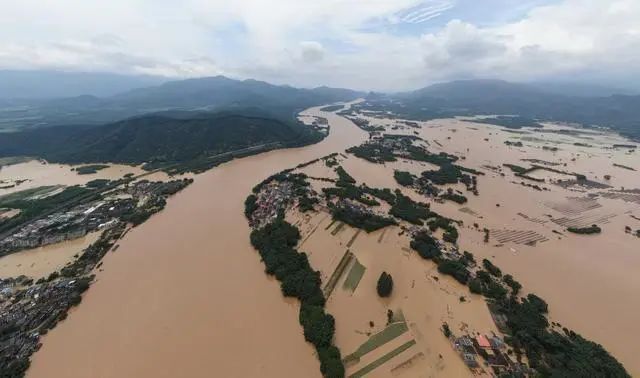
Film Town, Zhangxing Village, Zhangjiang Town, Qujiang District, Shaoguan City, Guangdong, June 22
Many people can't help asking, what happened to the climate this year? Why feel so extreme? What is the characteristics of my country's climate since the flood? Repeated, what major weather and climate events did we experience during the flood season? Why is the precipitation during the flood season in South China so fierce? Next, how will the climate in the flood season develop?
In response, Ai Wanxiu, chief forecaster of the National Level of the National Climate Center, Wang Guofu, deputy leader of the General Technology Team of the General Technology Team of the China Meteorological Bureau, Wang Guofu Yin Yizhou, Yuan Yuan, chief of the National Climate Center, brought a detailed interpretation.
01
What is the main climatic overview of our country since the flood this year?
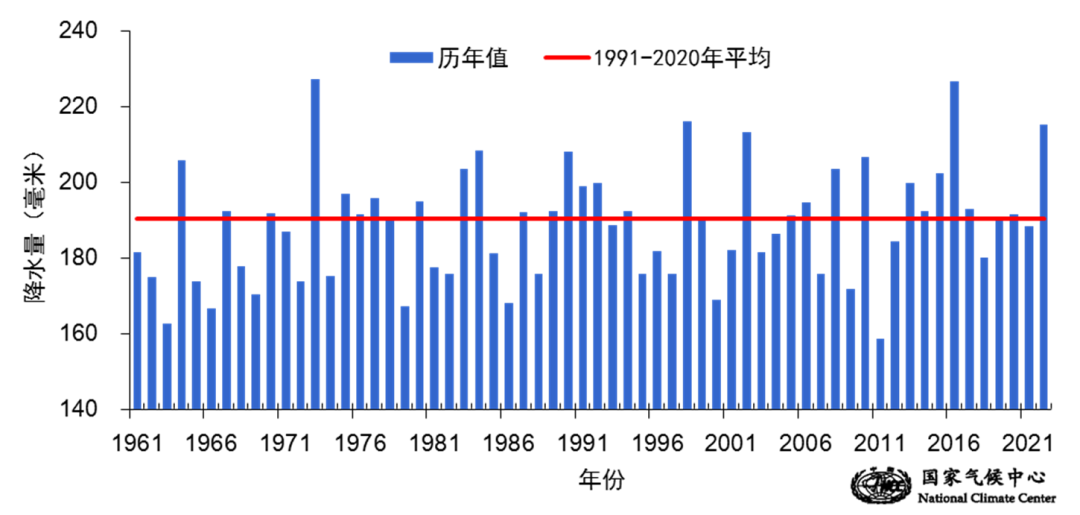
From March 17th to June 19th, the national precipitation has changed over the years (1961 to 2022)
Ai Wanxiu: From the perspective of precipitation, since the flood, the national precipitation has a lot of precipitation, the space is more than north -north, and the precipitation of the Pearl River Basin breaks the record- ——
Since the flood (March 17th to June 20th), the average nationwide precipitation was 215.3 mm, which was 13.1%more than the same period of the same year, and it was more than 4th since 1961.
The overall precipitation is the distribution characteristics of "more north and north". Guangxi's precipitation has been the largest in history since 1961. Sichuan and Guizhou are more than more than in the same period, and Fujian is more than 3rd; Ningxia and Henan's precipitation is the same period of history.
The precipitation in the Pearl River Basin is 31.7%more than the same period of the same year, the most history since 1961; the upper reaches of the Yangtze River is 22.9%more than the same period of the year, which is the same period of history.
Since the flood in the flood, nine national meteorological stations including Guangdong Shaoguan (286.4 mm), Yunnan Hekou (279.2 mm), and Zhejiang Qingyuan (227.6 mm) exceeded the record of the annual extreme value.

National precipitation from March 17 to June 19, 2022
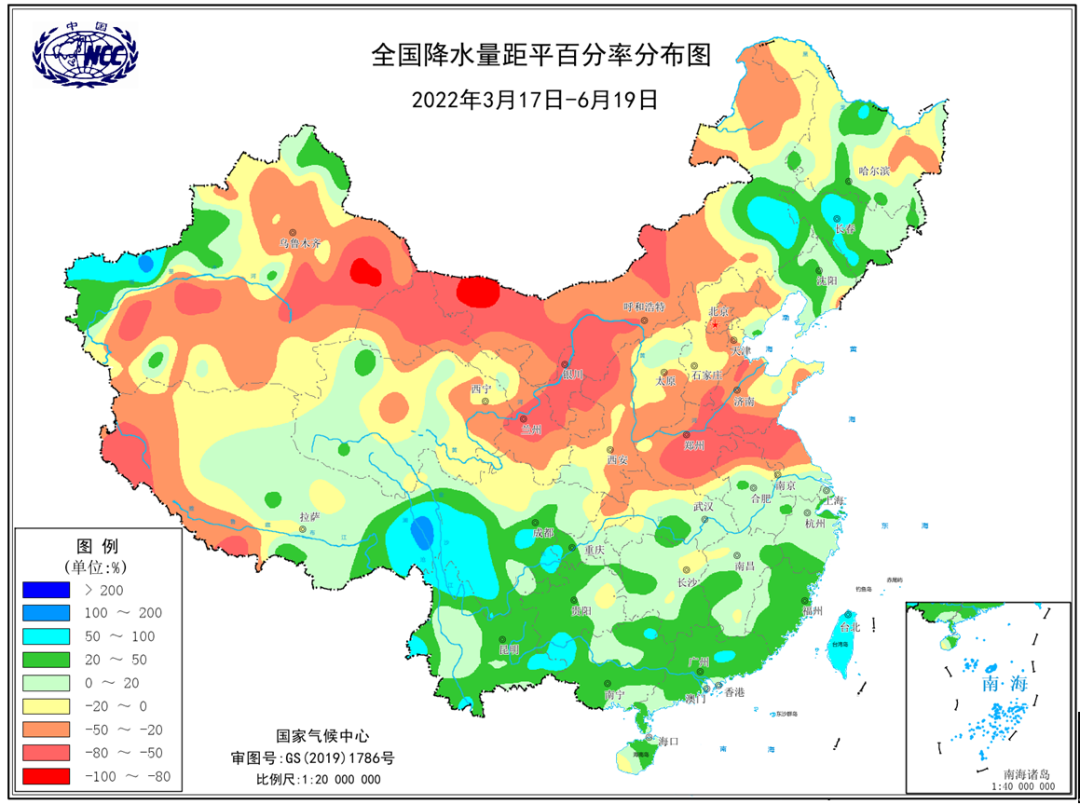
From March 17th to June 19th, 2022, national precipitation distance is flat.
From the perspective of temperature, the average temperature nationwide is high, and the space distribution is large.
Since the flood in the flood, the national average temperature is 14.6 ° C, which is 0.6 ° C higher than the same period of the same year, and it is the 5th high since 1961.
The distribution of temperature and space is large. The average temperature in Qinghai and Tibet has the highest history since 1961. Ningxia and Xinjiang are both secondary and Gansu is the third highest. Henan Wugang (41.1 ° C) and Inner Mongolia Etoch Banner (36.5 ° C) are recorded at the highest temperature.
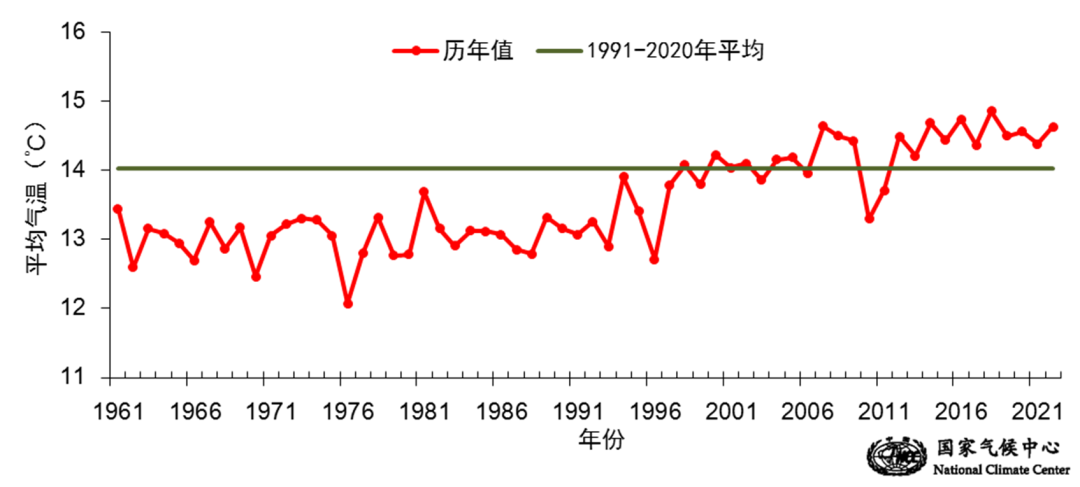
The average temperature of the country has changed from March 17 to June 19 (1961 to 2022)
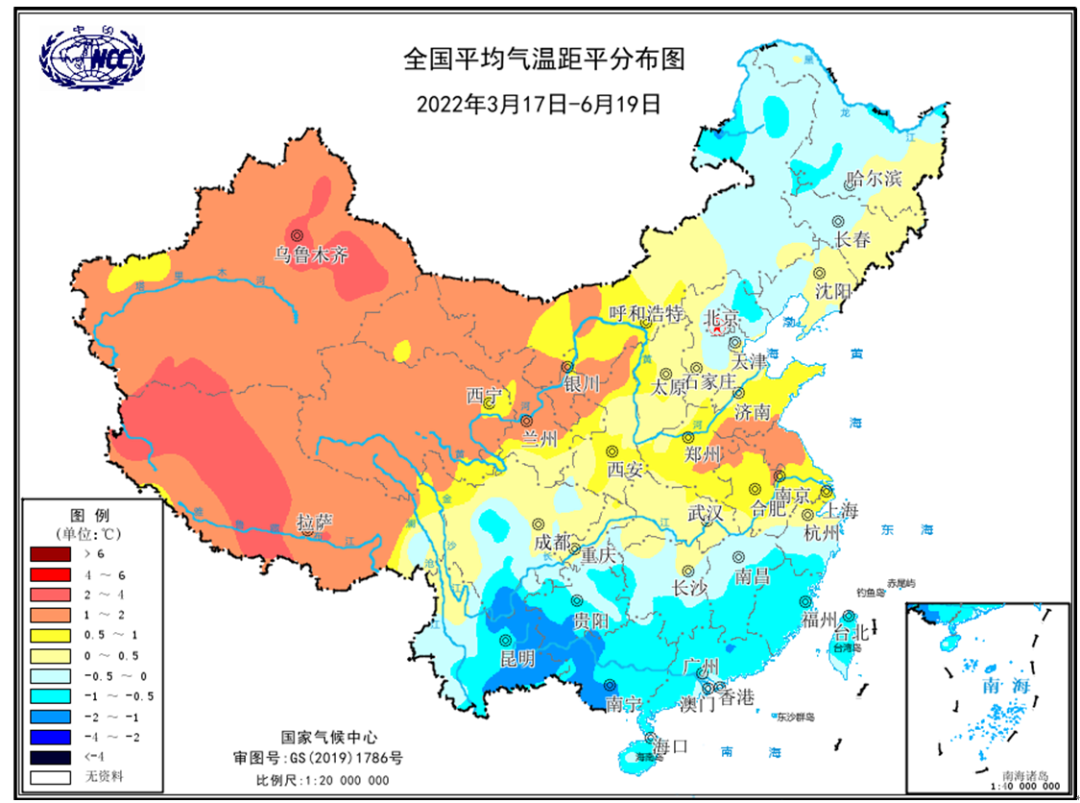
From March 17th to June 19th, 2022, the average temperature distance distribution map of the nationwide temperature
02
What are the major weather and climate events that have affected our country since the flood? What is the extreme?
Yin Yizhou: Since the flood in the flood, there have been many heavy rainstorms in the southern my country, and local disasters have a heavy impact; regional and phased meteorological droughts are obvious; many provinces are affected by the strong influence of the flow of the flow, and the local disasters are affected. Cold air activities are frequent and have a wide range of influence. Specifically-
There are many heavy rain in the south, and the overlapping area overlap is high
Since the flood in the flood, there have been 16 regional heavy rainstorms in China, all of which have occurred in the south, 2.0 more than the same period of the same year. Among them, from May 9th to 14th, May 27th to 30th, June 3rd to 14th, June 16th to 21st, the four regional storms in the southern region were large, the scope of influence was wide, and the duration was long. Essence
Especially the two regional storms since June, the overlapping area of heavy rain is high. During the two process, there were precipitation centers in central Guangdong and northeastern Guangxi; the number of days in Britain and Germany in Guangdong reached 6 days and 4 days, respectively, and Guilin, Guangxi, had 3 days and 4 days, respectively. Affected by strong precipitation, more than 90 river super warning water levels in the south; the water level of the Western River Ganjiang Wuzhou Station on June 19th rose to 20.95 meters, exceeding the alert water level 2.45 meters, forming the fourth flood of Xijiang; Beijiang Qianliu Guangdong Shijiao Station At 12:00 on the 19th, the flow rose to 12,000 cubic meters per second, forming the No. 2 flood in Beijiang. Continuously reducing water reduction in urban and rural floods, which have adversely affected residents' transportation and agricultural production.
Obvious regional and phased meteorological drought
The development of meteorological drought in northern East China, northern Central China and other places. In late February, drought elephants in northern East China developed and developed. Later, the drought developed in the east of Northwest, southern North China, northern China, and northern China. From June 21st to 24th, obvious precipitation occurred in the dry area, and partially relieved the drought development trend. At present, there are still moderate and above meteorological droughts in the above areas. Among them, there are special droughts in central and southern Henan, the central and eastern parts, and southern Gansu.
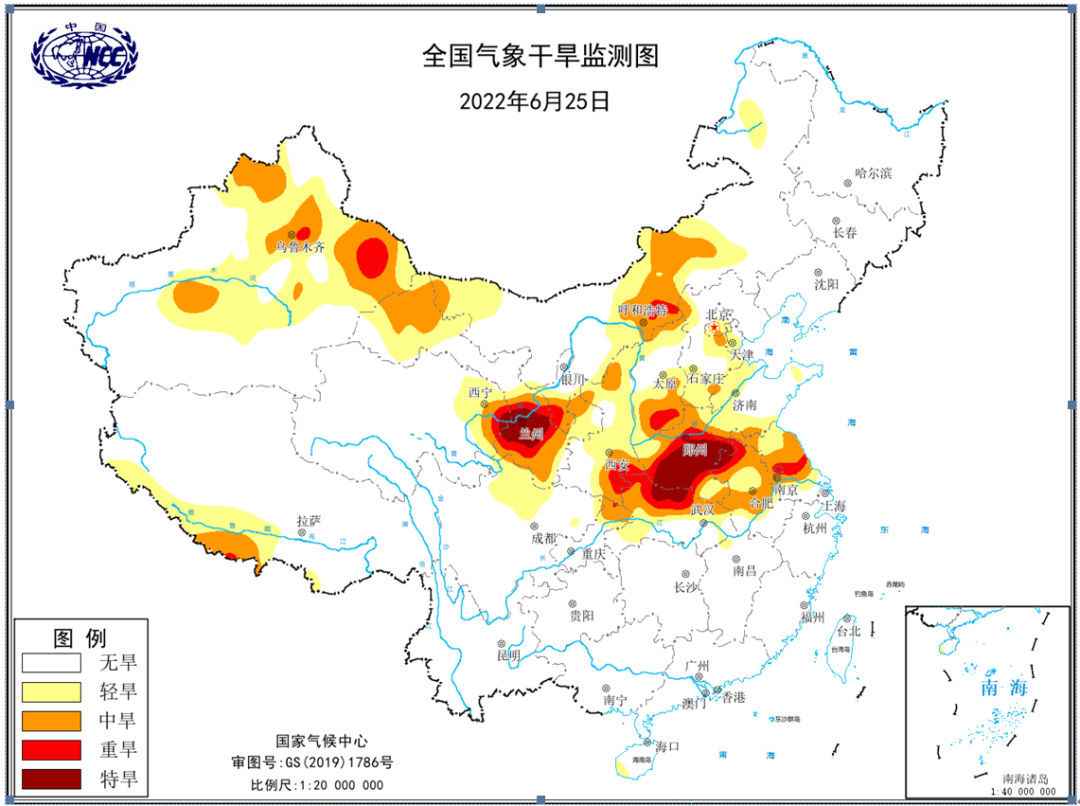
National Meteorological Drought Monitoring Monitoring on June 25
In addition, since May, the drought of meteorological drought in the south of the Northeast has developed. Since May 24, the precipitation process has occurred in the Northeast region and drought has been relieved.
Affected by the strong influence on the weather in many provinces, the influence of local disasters is seriously affected
Since the flood in the flood, more than 470 counties in 26 provinces (autonomous regions, municipalities) across the country have been affected by hail, thunderstorms, and strong winds. Among them, Guizhou, Shaanxi, Hebei, Yunnan and other provinces have a heavy loss. The first regional high -temperature weather process this year affects Henan and other places
Since June 13, my country has emerged for the first regional high temperature process this year. The high temperature over 35 ° C covers the land area of 3.439 million square kilometers, which affects the population of more than 600 million people. The southeast of Xinjiang is 38 to 40 ° C.
On June 16, the highest temperature in 59 national meteorological stations in Henan Province reached or exceeded 40 ° C, and the highest temperature in Linzhou, Henan reached 42 ° C. On June 23-24, a total of 29 national meteorological stations in Gansu, Henan, Qinghai, Shaanxi, Shanxi, Xinjiang and other places exceeded the highest value record in June. Four stations of Dengfeng (41.6 ° C) and Dance Steel (41.1 ° C) broke the historical extreme record, and Henan Jiaozuo's maximum temperature reached 43.3 ° C. On June 24-25, a total of 47 national meteorological stations in Hebei, Tianjin, Shandong, Shanxi, Beijing and other places exceeded the highest value record in June. 28 stations, including Tianjin Hangu (39.8 ° C), broke the historical extreme record.
From June 13 to 24, 2022

Cold air activities are frequent, and the scope of influence is wide
From the beginning of the flood to May 31, a total of 11 cold air affected my country, including the cold wave process 5 times. The cold air process and the number of cold waves are 4.2 and 3.8 more than the same period of the same year, respectively, the same period and most since 1961. Since late April, cold air activities have reached the cold wave standard for cold air activities (from April 22 to 23, April 27 to 30, and May 6 to 8). It's rare.
03
Focusing on the flood season in South China, why is the rainfall so heavy? What are the major rain and floods in South China in history in history?
Yuan Yuan: This year's flood season in South China began on March 24th, 16 days earlier than usual (April 9). As of June 22, the former flood season in South China has lasted for 91 days, 5 days longer than usual, and the cumulative rainfall and heavy rainfall day. Since the flood in South China, the average precipitation of the four provinces of Guoqiong, Fujian, Guangdong is 854.3 mm, which is 32.4%more than the same period of the same year. It is more than 2nd in history since 1961. The average number of rainstorms in the region is 4.2 days, which is the largest period of history. The strong watering of the Pearl River Basin has a long -alert water level, which has adverse effects on transportation and agricultural production.
From March 24th to June 22nd, Min, Guangdong Guoqiong changes over the years (1961 to 2022)
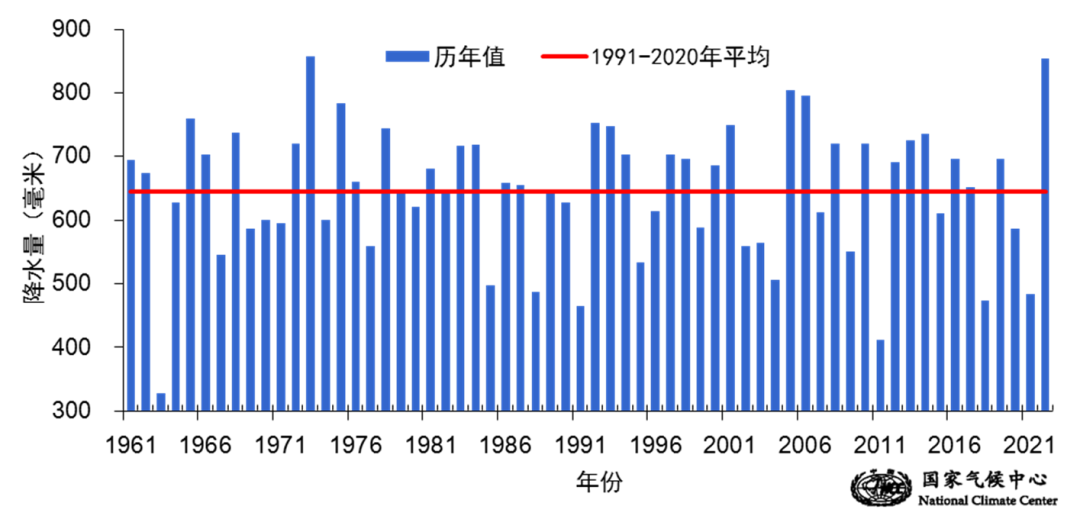
In 2022, the characteristics of early flood in South China, heavy rainfall, and long rainy season are closely related to the current La Nina incident that is currently in the East Middle East Pacific. The La Nina incident began in the fall of 2021. This year is the second year of Lamanina. At present, the attenuation is slow and staged. This provides an important climate background for this year's summer summer explosion and my country's rainy season.
Since May, Eurasia's mid -to -high latitudes of the atmospheric circulation has a large direction, which has affected frequent cold air activities in the eastern region of my country. Especially since June, the cold vortex of the Northeast has become more active and has strengthened to the south. On the one hand, it has guided the cold air south to affect the south of my country to South China. Affects South China. At the same time, with the outbreak and establishment of the summer wind, the Southwest water vapor transport guided by the monsoon circulation is also strong.
Yin Yizhou: According to the results of the national meteorological disaster comprehensive risk census work, in history, South China has repeatedly occurred many major rainstorms and floods in June:
In early June 1994, the process of heavy rain appeared in South China. The process in most regions generally had 200 to 400 mm, and some areas reached 400 to 700 mm. Large -scale continuous rainstorms have caused the dry in the Pearl River Basin, and the tributary floods have skyrocketed, and the floods occur at the same time in the west and north rivers. The flood was in the early period of early rice pregnancy, which caused a fatal blow to crops and food production. According to statistics, 67 cities and counties in Guangxi and 62 cities and counties in Guangdong have suffered flood disasters to varying degrees. The affected population in Guangxi was 5.51 million, and the direct economic loss was 36.77 billion yuan; the affected population in Guangdong Province was 22.16 million, and the direct economic loss was 26.4 billion yuan.
In June 1998, the Pearl River Basin had more than a century of encounters in the Xijiang River. From June 16th to 27th, 84 counties (cities) in Guangxi Autonomous Region exceeded 100 mm. Millimeter, the daily precipitation of Chang'an Station in Rong'an County reached 355 mm. The intensity of precipitation and rainfall is rare. Affected by the strong precipitation, the rivers and rivers of the basin rose one after another, which led to a long high water level along the Xiangjiang dry flow. Water level. According to statistics, there are 62 counties (cities) in Guangxi. 84.24 million people were affected, 28,400 houses collapsed, and the affected area of crops was 670,000 hectares. It closed 282,000 hectares and lost 10.9 billion yuan in direct economic losses. 2.665 million people in 45 counties in Guangdong Province suffered a disaster, and the direct economic losses were 7.49 billion yuan. From June 17th to 25th, 2005, a large -scale continuous rainstorm appeared in the Pearl River Basin. High -intensity and heavy rain appeared in local areas. Most of Guangdong and Guangxi's cumulative precipitation generally had 200 to 250 mm. At 250 mm, the average precipitation of the Pearl River Basin reached 233.2 mm. Affected by continuous precipitation, the Pearl River Basin Xijiang, Beijiang, Dongjiang, and Pearl River Delta occurred different magnitude floods. According to statistics, a total of 1,26.28 million people in 163 counties (cities, districts) in both Guangdong and Guangdong were affected, with a collapse of 248,000 houses, an agricultural affected area of 656,000 hectares, and a direct economic loss of 13.60 billion yuan.
04
This year is the year when the national meteorological disaster comprehensive risk census work has achieved? What is helpful for disaster prevention and disaster reduction during the flood season?
Wang Guofu: Through the national meteorological disaster comprehensive risk census work, we have formed a set of technical methods for identification and risk assessment of objective disaster incidents; establishing a disaster event library including disaster risk indicators and disaster conditions; , Support professional services and decision -making services; cultivate a technical team to support the construction of a disaster risk management business system.
At present, the meteorological department has formed ten types of meteorological disaster surveys and risk assessment technical specifications, which will gradually form industry standards, which has laid the technical foundation for the development of meteorological disaster risk management business. Some national and provincial meteorological departments have carried out pilots of risk (pre -pre -) assessment business, and formed internal reference materials to provide decision support for disaster prevention and mitigation. In the future, there will be more risk assessment products to provide more refined weather services.
Investigation of major meteorological disasters in history, the formation of disaster incident libraries, including the start and end of disaster, disaster factors, evaluation indicators, disaster effects and losses. Comparing with the current events and historical events, you can understand the strength level of the current event, the scope of disaster loss that may bring, etc. For decision -making reference. After the incident, through comparison, the benefits of disaster prevention and disaster relief work can also be instructed to a certain extent.
2022 is the year of the end of the risk census. A large number of results are presented to the government, industry, public, etc., one of which is the series of risk assessment and zoning map. Through the graphs and related information, you can find out the bottom number of hidden dangers of natural disaster risks in the country, find out the ability of disaster resistance in key areas, objectively understand the comprehensive risk of natural disasters in the country and regions, and effectively carry out natural disaster prevention work for the central and local people's governments at all levels. Effectively ensure that the economic and social sustainable development provides authoritative disaster risk information and scientific decision -making basis.
Since 2020, the China Meteorological Administration has continued to carry out comprehensive risk of meteorological disaster risk census training, and the provincial meteorological departments have also carried out training for grassroots technicians. Through training and the development of actual census work, the concept and connotation of disaster risk management are deeply rooted in the hearts of the people. This laid the foundation for talent -based forecasting early warning and risk -based estimates.
05
What are the characteristics of this year's flood season?
Yuan Yuan: It is expected to be in the summer (July to August). The climate status in my country is generally to deviation. The staged drought and flood disasters are obvious. The extreme weather and climate events are too large, and the climate is changing in the season.
The main rain areas are located in the southeast, northern, northwest, northern China, northern China, most South China, most Southwest, and southern Tibet. Xinjiang, the west of the northwest region, central and southern East China, central and central China, and other places have less precipitation, and phase meteorological drought may occur. Xinjiang, East China, and the medium high temperature daily are more than the same period of the same year, and a phased high -temperature heat wave will occur.
Since the spring of this spring, due to the incident of the Equal Middle East Pacific La Nina incident, the South my country Sea summer wind explosion time and the main rainy season in China (South China ’s pre -flood season, Southwest Rainy Season, Jiangnan Meiyu, and Yangtze River Rain) have begun to be earlier than usual. However, in addition to the La Nina incident, the abnormal climate in my country is also affected by other factors such as other sea areas (such as the Indian Ocean, Atlantic Ocean, etc.), as well as other factors such as snow and polar ice. It will continue to strengthen monitoring and prediction and roll up the positive climate prediction in a timely manner.
Produced by China Meteorological Administration Xuanke Center (China Meteorological News Agency)
Author: China Meteorological Daily reporter Cui Guohui
edit:
- END -
Yishan County Meteorological Observatory issued a yellow warning of geological disasters [Class III/
Laoshan County Meteorological Bureau and Laoshan County Natural Resources Bureau, June 9, 2022, jointly issued geological disasters Meteorological risk Yellow Warning: Affected by continuous precipita
\"Culture\" about the Spring Festival, how much do you know

Happy Spring Festival Happy New Year New Year's festival, ope...